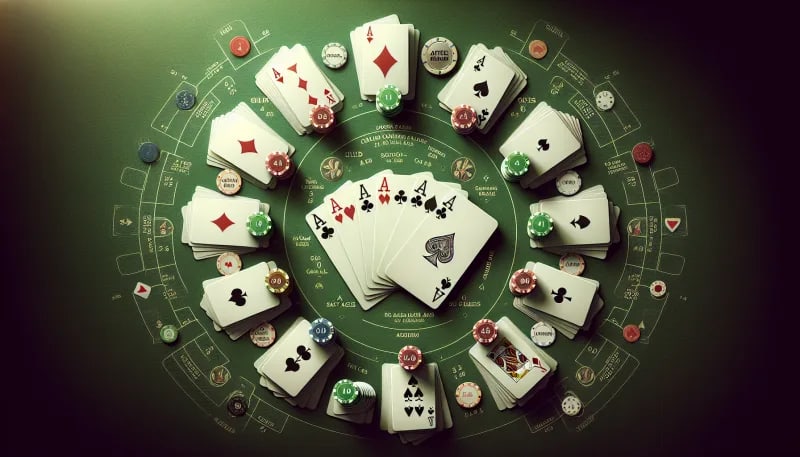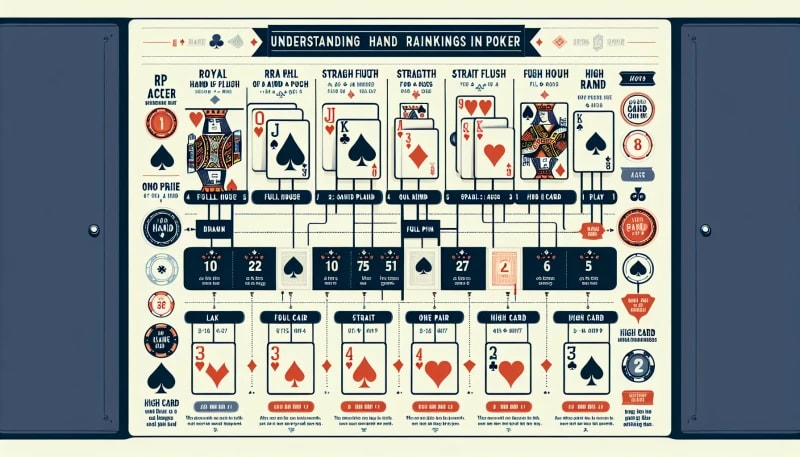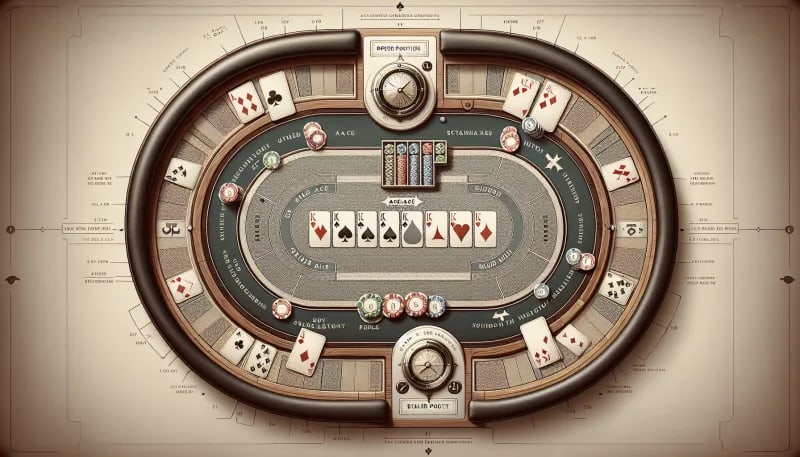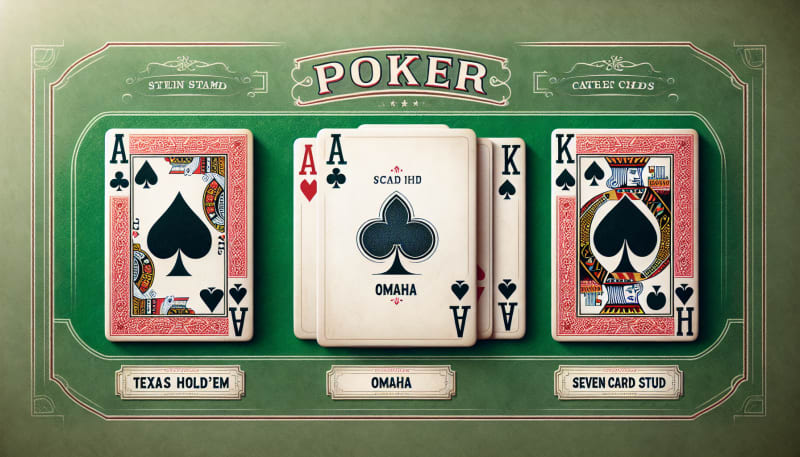Poker Starting Hands Guide: How to Elevate Your Game from the Beginning
The Importance of Starting Hands in Poker
Let's dive right in. Have you ever wondered why some players consistently perform better than others? A big part of the answer lies in the starting hands they choose to play. The two cards you're dealt at the beginning of a Texas Hold'em game, for example, set the tone for everything that follows. They're like the foundation of a building—the stronger they are, the higher your chances of constructing a winning hand.
How crucial are starting hands, really? Just picture this: If you're continually entering pots with weak hands, you're essentially trying to climb a mountain with no gear. Conversely, select those strong starting pairs, and you're halfway up the peak with the best equipment. This isn't about a one-off win; we're talking about a strategic pattern that, over the long term, consistently adds chips to your stack.
Still, let's not oversimplify. Even the best starting hands don't guarantee a win; they merely increase your odds. For instance, pocket aces, the strongest starting hand, can still be beaten – poker is unpredictable, after all. But over time, good decisions based on strong starting hands will statistically lead to more positive outcomes.
Can you see the ripple effect in play here? The strength of your starting hands not only impacts your confidence and betting strategy for the current hand but also influences how your opponents perceive and play against you. Both in the short-term and long-term, it's a game of information and psychology as much as it is about the cards.
Mastering starting hand selection is a cornerstone of any proficient poker strategy. Remember, it's not about playing every hand; it's about playing the right hands. As we move forward, you'll see how this principle ties in seamlessly with Understanding Hand Rankings. Knowing what you're looking for is half the battle; recognizing what you've got is the rest.
Understanding Hand Rankings
If we've established that starting hands are crucial in poker, how do we know which ones to play? Let's dive into the hierarchy of poker hand rankings.
Imagine holding a royal flush, the unbeatable hand. You're at the pinnacle, with an ace-high straight flush. Can anything beat that thrill? Of course, these spectacles are rare, but they define the top of the poker food chain.
Next in line is the straight flush. Any five consecutive cards of the same suit make this a striking hand. Just one notch down from royalty, yet still a powerhouse.
Now let’s talk about four of a kind. Four aces or four threes – the value may differ, but the dominance remains. It's a force to be reckoned with, and it's not often you'll find yourself outgunned with this hand.
The full house follows, a fusion of a three of a kind and a pair. It's like holding two sets of power in your palm – a very comforting feeling at the table.
Flush. Five cards, same suit, any order. It’s a canvas of one color, looking deceptively simple yet powerfully cohesive. Have you ever felt the satisfaction of watching your opponents fold to your flush?
Next is the straight. A sequential line-up, regardless of suit, it’s like a conga line of cards dancing across the felt, and it can often lead the way to victory.
Three of a kind, then, seems almost humble – three friends joining your poker party. It’s surprisingly effective, though, a solid middle ground in the rankings.
Two pair comes next. It’s like holding a double-edged sword – twice as nice as one pair, and still capable of cutting through the competition.
One pair – it's common, but can be the cornerstone of a bluff or a surprise win. A lone pair is still a hand with potential.
Finally, the high card. It's the default, the baseline. But don't be fooled – even an ace can be the slingshot that takes down Goliath.
Remember, this list is your compass in the tumultuous sea of poker hands. It gives context to why some starting hands are stars and others are underdogs. With this map, we're prepared to explore the highs and lows of starting hand ranges in our next section, The Best and the Worst: A Spectrum of Starting Hands.
The Best and the Worst: A Spectrum of Starting Hands
After getting to grips with hand rankings, it's clear that not all starting hands are created equal. I'm talking about the range that stretches from the mighty pocket aces (A-A) to the notoriously dismal 7-2 off-suit. Have you ever wondered just how wide that spectrum is?
Pocket aces, the absolute jewel in the crown of starting hands, dominate the battlefield with a winning probability of around 81% against any random hand in a heads-up scenario. That's a comforting piece of knowledge to sit back on, isn't it? But don't get too comfy; this is poker, a game of uncertainty and thrilling twists.
At the other end, 7-2 off-suit is branded the worst starting hand for good reason. Its winning chances? Dismal. You're banking on a miracle to pull ahead with this infamous duo. Your chances of success with this hand are so slim, even a desert cactus offers more hydration.
But here's the thing – poker isn't just about the cards you're dealt; it's how you play them. Sure, with 7-2 off-suit, I might look to fold more often than not. Yet, even the worst starting hand can win. That's the unpredictable beauty of the game.
In between these extremes lies a whole spectrum of possibilities. Suited connectors like 8-9 suited can quietly turn into straights or flushes, becoming stealthy powerhouses. And let's not forget those middle pairs – like 7-7 – which can spar with the big boys if the flop falls in your favor.
Does knowing the inherent probabilities of these hands change the way we play? Absolutely. But remember, these probabilities are not promises; they're a guideline, a beacon in the murky waters of decision-making. And as we move into discussing Positional Play and Starting Hands, this knowledge becomes a vital asset, wouldn't you say?
So let's shuffle up and deal. It's time to use this understanding as a launchpad to divine the optimal play from any position at the table. Shall we?
Positional Play and Starting Hands
Remember when we discussed the spectrum of starting hands in poker? Well, positioning at the table isn't just for show. It's vital to the power of those hands we talked about. Let me break it down for you.
In early position, you're in the hot seat – acting first or close to it. This means being choosy with your hands. Pocket Aces or Kings? Sure, step into the limelight. But with weaker hands, think twice. You're flying blind, after all, with no idea about the actions that will follow.
Now, the middle position is the poker equivalent of a teenager; not a kid, but not quite an adult. Here, you can loosen up a bit. But not too much! You've got some info from early position players, but there's still mystery after you. Those suited connectors you love might seem more appealing, but are they worth the risk? Sometimes, maybe.
Ah, the late position – the sweet spot. This is where you can, and should, broaden your horizons. You've seen nearly everyone's moves before you need to act. Have they all checked? Great, perhaps those lower pairs or high card hands gain a little lustre.
Ever wondered how the same hand can feel like a treasure in one spot and a trap in another? That's the beauty of positional play. A K-Q suited feels robust on the button, but hold it under the gun, and suddenly, you're on shaky ground.
In essence, position is the lens through which we view the strength of our starting hands. It adds layers to our strategy and dictates our approach to each round.
As we segue into the world of different poker variations, remember: the core principles of positional play remain key. Yet, the value of starting hands shifts under its mutable light, taking nuances you'll soon discover.
Starting Hands in Different Poker Variations
As we've established the importance of positional play in poker, it's now time to dive into starting hands across different variations of the game. The value of your hand can significantly shift from one type of poker to another. Have you ever wondered how your starting hand selection changes when flipping between games like Texas Hold'em, Omaha, or Seven-Card Stud? Let's break this down.
In Texas Hold'em, you're looking for strong high cards, pairs, and connectivity in suits. Why does this matter? Well, these hands have the potential to make the best 5-card hand by the river. Hands like A-A, K-K, Q-Q, and A-K are premium. They can often play well even in early position.
Shift to Omaha, and the game changes completely. You now receive four hole cards, and the complexity increases. Here, you seek hands that work well together—double suited and connected cards that can maximize your chances for flushes and straights. A hand like A♠A♦K♠K♦ is a monster in Omaha, but wouldn't you also consider 10♠J♠Q♦K♦ for its drawing power?
Then we have Seven-Card Stud, where things get even more intricate. It's a game where pairs, three-of-a-kinds, or high suited connectors matter, but starting hand selection must also take into account visible cards of your opponents. If you're holding (A♣)A♠ and see another A♣ showing in another player's hand, your chances of hitting a set diminish.
In any variation, starting hand strategy isn't set in stone. Don't you want to be adaptable? Knowing the textbook right hands to play is one thing, but learning when to deviate is what makes you stand out.
As we move away from the general consideration of starting hands, it's important to consider how these foundations shift when we're facing different opponents. In the next section, 'Adjusting Starting Hand Strategy to Opponents,' we'll take a closer look at how our starting hand decisions must evolve as we gather more information about the people we’re up against at the felt.
Adjusting Starting Hand Strategy to Opponents
When moving beyond the basics covered in "Starting Hands in Different Poker Variations," it's crucial to tailor your strategy to the crowd around the felt. After all, aren't we all trying to exploit our opponents' tendencies to maximize our edge?
Loose and tight players require different approaches. Against loose players, who flock to pots like moths to a flame, tightening up can be powerful. Why? Because you'll often be ahead of their range when you decide to play back at them. But remember to expand your value betting range; these players are more likely to call with weaker hands.
Meanwhile, tight players are the rock gardeners of the poker world. Against them, you can steal the blinds more frequently and widen your range, particularly in late position. But tread cautiously — a raise from a tight player signals strength. Do you really want to challenge them without a solid holding?
What about aggressive versus passive players? Aggressive foes can be both a blessing and a curse. Throw your textbook starting hands out the window and adjust your range to include hands that can crack big holdings or trap overzealous opponents. Can you afford to play suited connectors or small pairs, hoping to catch them over-committing?
Passive players, on the other hand, allow you to dictate the pace. With them, you can oftentimes play more speculative hands and exert pressure post-flop. But don't forget — when a passive player shows strength, it's time to listen. Could they be holding that monster they've been waiting for all night?
Every hand you play is a chance to learn more about your opponents. Keep mental notes. Are they folding too often to three-bets? Perhaps it's time to bluff more. Or are they calling stations, unable to let go? Then value betting becomes your best friend.
Your starting hand strategy isn't static; it's a dynamic, ever-adapting playbook. And as we segue into the next section on "Bankroll Management and Starting Hands," always consider how your bankroll influences the risks you can afford to take. Isn't it true that the size of your war chest often dictates the battles you enter?
Bankroll Management and Starting Hands
Ever noticed how the hands you choose to play can directly impact your chip stack's ebb and flow? Choosing the right starting hands isn't just about playing to win the pot—it's about preserving and growing your bankroll.
Let me tell you, bankroll management and starting hand selection go together like a flush draw on a wet board. Smart starting hand decisions limit losses and prevent the bleed-out of your bankroll during a downswing. Have you ever considered folding those marginal hands pre-flop could save you a bundle in the long run?
Think about it. When you stick to premium hands, especially in tough games, your bankroll isn't constantly put at risk. By avoiding tricky spots with weaker hands, you're not only playing better poker—you're ensuring a steady fishing line for your bankroll.
Better starting hands equal fewer tough decisions post-flop. And what does that give us? A more predictable and manageable outflow of our chips. When we control the outflow, we keep our bankroll healthy and ready for action.
Ever seen a player on tilt, throwing good money after bad? That’s a bankroll disaster in the making. By making disciplined choices with our starting hands, we avoid the slippery slope that leads to bankroll blunders. We position ourselves for longevity and success in poker's marathon.
Right after we've talked about adjusting our starting hand strategy against different opponents, think about the consistent application of that strategy—because consistency will be the guardian of your bankroll.
Now, as we step into the next section on 'Practical Tips and Common Mistakes,' remember this golden rule: A well-managed bankroll starts with the hands you're willing to play. Always ask yourself, is this hand worth the potential hit to my bankroll? If not, let it go and wait for a better opportunity. Trust me, the discipline you exercise today pays dividends at the tables tomorrow.
Practical Tips and Common Mistakes
Selecting the right starting hands is vital. First off, position matters. Are you in early, middle, or late position? Your choice of starting hands should expand as your position gets later.
Remember, not all aces are created equal. Pairing an ace with a low kicker often leads you into trouble. Know when to let go of A-2 through A-8.
Pocket pairs can be seductive, but small ones can lead you astray. Don’t overcommit to pocket twos through sixes. They're often only valuable if they hit a set on the flop.
Now, suited connectors have flush and straight potential, right? That's true, but don’t overplay them. The odds of hitting a monster are slimmer than they seem.
Don’t forget to account for limpers. Lots of limpers might mean a cheap flop, but does your hand play well in a multi-way pot? If not, fold.
Aggression is a tool, not a constant strategy. Learn when to employ it. Constantly raising pre-flop with mediocre hands is a recipe for diminishing your stack.
And what about those hands that almost look good? King-Ten, Ace-Nine, and the like. These can backfire. Don't get trapped in second-best hand hell.
Mistakes? Well, playing too many hands is atop the list. Beware of loosening up too much, especially in the wrong positions.
Getting too attached to good, but not great, hands is another misstep. You can't win every pot. Recognize when you're likely beaten and fold.
Finally, ignoring your opponents' tendencies is a mistake. If they're tight, your marginal hand loses value. If they're loose, your strong hand gains it.
Tight as right, they say, but also, be adaptable. Fold more, but raise and reraile when you've got the goods.
Remember, skill in poker is about picking battles as much as playing cards. Steer clear of these pitfalls, and pick your starting hands wisely. Your bankroll will thank you.
Moving on from starting hands, make sure to constantly review your play. This is where the lesson ends, but your road to mastery is just beginning.








